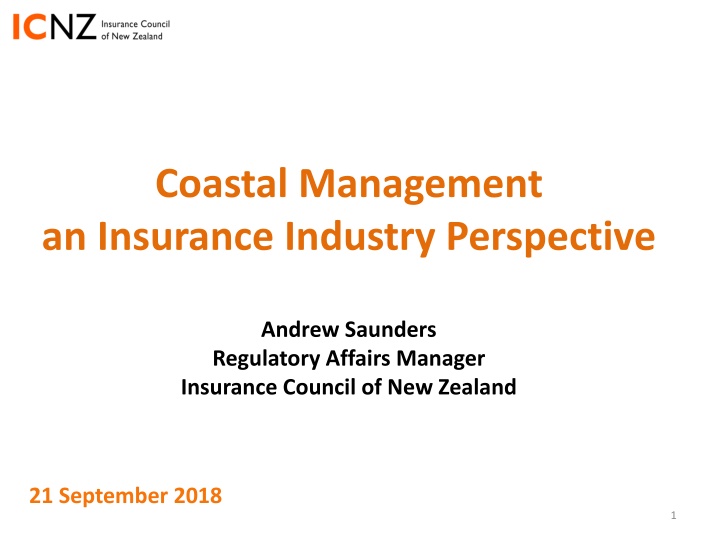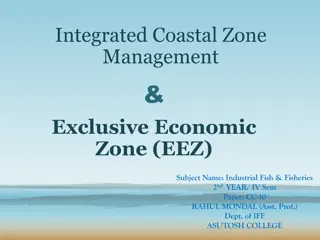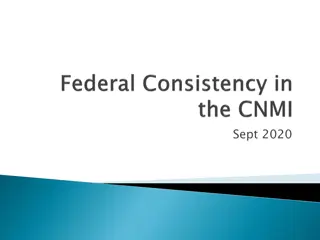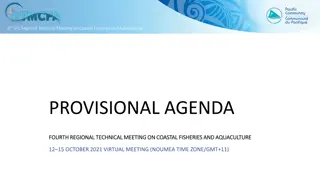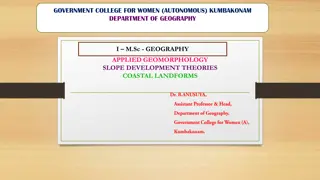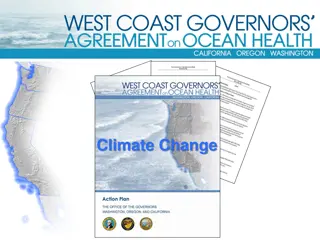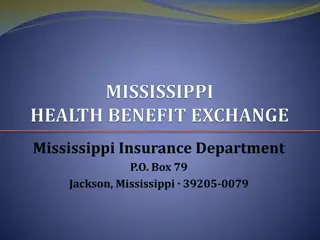Coastal Management and Insurance Industry in New Zealand
Coastal areas in New Zealand face risks from flooding, storm surges, and sea-level rise, making insurance crucial for managing property losses. Insurers respond to coastal risks by adjusting premiums, excesses, and coverage. Long-term coastal planning involves managing risks through strategic building, infrastructure upgrades, and public education on climate change impacts.
Download Presentation

Please find below an Image/Link to download the presentation.
The content on the website is provided AS IS for your information and personal use only. It may not be sold, licensed, or shared on other websites without obtaining consent from the author.If you encounter any issues during the download, it is possible that the publisher has removed the file from their server.
You are allowed to download the files provided on this website for personal or commercial use, subject to the condition that they are used lawfully. All files are the property of their respective owners.
The content on the website is provided AS IS for your information and personal use only. It may not be sold, licensed, or shared on other websites without obtaining consent from the author.
E N D
Presentation Transcript
Coastal Management an Insurance Industry Perspective Andrew Saunders Regulatory Affairs Manager Insurance Council of New Zealand 21 September 2018 1
Recent New Zealand experience Flood, storm surge and sea level rise NZ generally well insured, so high % of property losses are insured 2017 was record year for weather related insured losses ($243m) and 2018 also high (~$220m thus far) As a coastal nation NZ is vulnerable to sea-level rise: Replacement value of buildings within 0.5m of the spring high tide mark is $3 billion and that of buildings within 1.5m is approximately $20 billion. Around 9,000 homes within 0.5m and 44,000 homes within 1.5m. 2
Global as well as local SPEAKER LOGO 2018, Typhoon Mangkhut 2018, Hurricane Florence 2018, Typhoon Jebi, Kansai Airport 2012, Hurricane Sandy 3
Insurance fundamentals SPEAKER LOGO Insurance simply transfers risk from the insured to the insurer, it does not reduce the risk. Traditional insurance works well for potential events that are accidental and unlikely, by pooling risk and premiums so the many pay for the few who suffer losses. Traditionally premiums based on claims made (i.e. backward looking), but changing with predictive models to be more forward looking. Insurers also looking at greater risk-rating - technology, science and modelling enabling more granular assessment of risk. 4
Implications SPEAKER LOGO Unless coastal risk exposures (from climate change or otherwise) are managed, insurers will respond through premiums, increasing excesses, exclusions or refusal to go on risk. Losses from sea-level rise are foreseeable and inevitable, and therefore un-insurable. Property (residential and commercial) purchase and development is generally funded by banks who depend on insurance to underwrite the risk on the assets they loan for/against. Insurance contract and premium signal only applies to the next 12 months property owners and planners need to look beyond that to the long term risk-profile. 5
Coastal planning/management: take the long view SPEAKER LOGO Manage risk over longer term by considering: where we build in future - don t consent where adaptation can t work how we build e.g. requirements placed on developers providing information on current and future risks protecting existing infrastructure upgrading existing infrastructure to 21st century needs e.g. storm-water drains building new infrastructure where appropriate (e.g. sea-walls) relocatable buildings/retreat where risk is too high/doesn t make no sense to protect long term improving warning systems and public education so there is time to reduce the impact of storms etc taking an ongoing and proactive approach to adaptation using tools such as adaptive pathways
